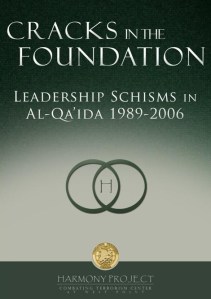Though it has long been known that al-Qa’ida has suffered from disunity at the leadership level, analysis of documents declassified from the Harmony Database allow us to gain a fresh insight into the engine driving those conflicts and illuminate the vulnerabilities that these conflicts have created for the organization. Al-Qa’ida has consistently put its ability to inspire a broader movement over the development of its organizational capacities to pursue strategic military goals. Al-Qa’ida’s preference for branding, the military incompetence of its autocratic leaders, and the unanticipated ferocity of the United States’ response to the attacks of 9/11, have together left the brand managers the only ones standing. This is not to say that al-Qa’ida has not been able to threaten American interests; it has. But its real strength has never been as a fighting force, but rather its ability to transform what have traditionally been the local or national concerns of Islamist activism into a vision of apocalyptic inter-civilizational conflict.
This report, grounded in the data from the Harmony documents, charts the history of this transformation and of the internal divisions that surrounded it. The Harmony documents shed light on cohesion problems that have been bedeviling Salafi Jihadi organizations going back more than thirty years. While the branding-versus-bureaucracy crux outlined above has consistently been the driving force, at different points in the development of al-Qa’ida the scope and consequences of this leadership struggle have changed.
During the first phase, from the founding of the organization at the close of the anti-Soviet jihad in Afghanistan to the return of the leadership to South Asia after its misadventures in Africa, al-Qa’ida had failed in both areas, creating neither an effective guerrilla organization nor a consistent jihadi message.
In the second phase, from al-Qa’ida’s re-establishment in Afghanistan to its dispersal from that refuge by American-led attacks, al-Qa’ida was able to exploit the relative security provided by its uneasy alliance with the Taliban to develop and begin to “market” its anti-American message. Though it was during this period that it was able to carry out the large-scale acts of terror for which it is famous – the 1998 bombings of two American Embassies in Africa and the attacks of September 11, 2001 – internal divisions over the decision to target the United States severely degraded al-Qa’ida’s organizational capacity.
During the third and current phase, which began with the United States’ response to 9/11, al-Qa’ida as a centrally-controlled bureaucracy all but disappeared, with most of its key military and strategic leaders dispersed, captured or killed. In this period al- Qa’ida Central has been largely reduced to a media organization, while the Iraq war has created a market for its message, a field in which jihadis with little or no connection to the remnants of al-Qa’ida’s central bureaucracy can take up (and thus alter) the al-Qa’ida banner.
 Skip to content
Skip to content

